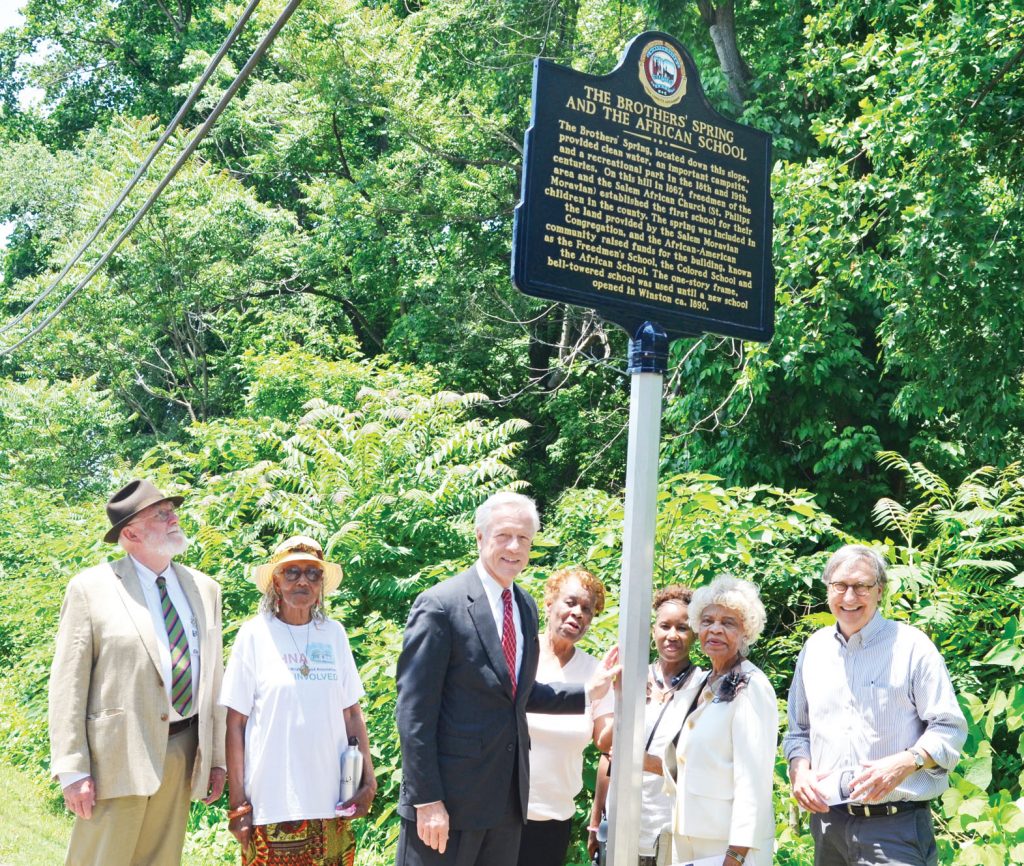Happy Hill school and spring get historic marker
Happy Hill has a new marker to denote a historic spring and an 1867 school built by freedmen.
The marker was dedicated on Saturday, May 20, in a ceremony by Mayor Allen Joines and other elected officials. The Brother’s Spring was an important campsite, recreational park and source of water in the 18th and 19th centuries. But its existent had been forgotten. It was rediscovered when staff with Old Salem Museums and Gardens were examining a passage in the Moravian archives of a forget-me-not flower described as being at the Brother’s Spring. Old Salem Archaeology Director Michael “Mo” Hartley said they were intrigued by the mention of the unknown spring. After some research, they were able to locate it down the thickly wooded slope below where the marker now stands on Alder Street.
“There’s a mystery to something that was lost and comes back into your possession in a sense,” said Hartley. “Then you regain something that has been gone.”
City Council Member John Larson praised the work of his former Old Salem colleagues in recovering lost history that had been “buried in time.” The marker also denoted a school, which was once located on the hill above the marker.
The school was known as the Freedmen’s School, the Colored School and the African School. It was built just two years after Emancipation in 1865, when education became a priority for former slaves. The land for the school, which included the spring, was provided by the Salem Moravian Congregation. The area’s freedmen and Salem African Church, which would become St. Philips Moravian Church, raised funds for the one story, bell-towered school house. Lewis Hege, Alexander Vogler and Robert Waugh led the effort. The school was used until the Depot Street School was opened in Winston around 1890.
The area eventually became known as Happy Hill. The historic African-American community would go through many transformations, from shotgun houses to public housing. It’s now home to a mix of low income and senior housing, homes built by Habitat for Humanity and other houses in a community with a newly revitalized neighborhood association.
Mayor Pro Tempore Vivian Burke said it’s a rich history worth remembering.
“We thank you, we commend you and may we continue to move forward to talk about the contributions that the people made in this area to enhance this whole city,” said Burke.

Photo by Todd Luck Program participants unveil the historic marker for the Brother’s Spring and the African School at Happy Hill on Saturday.










